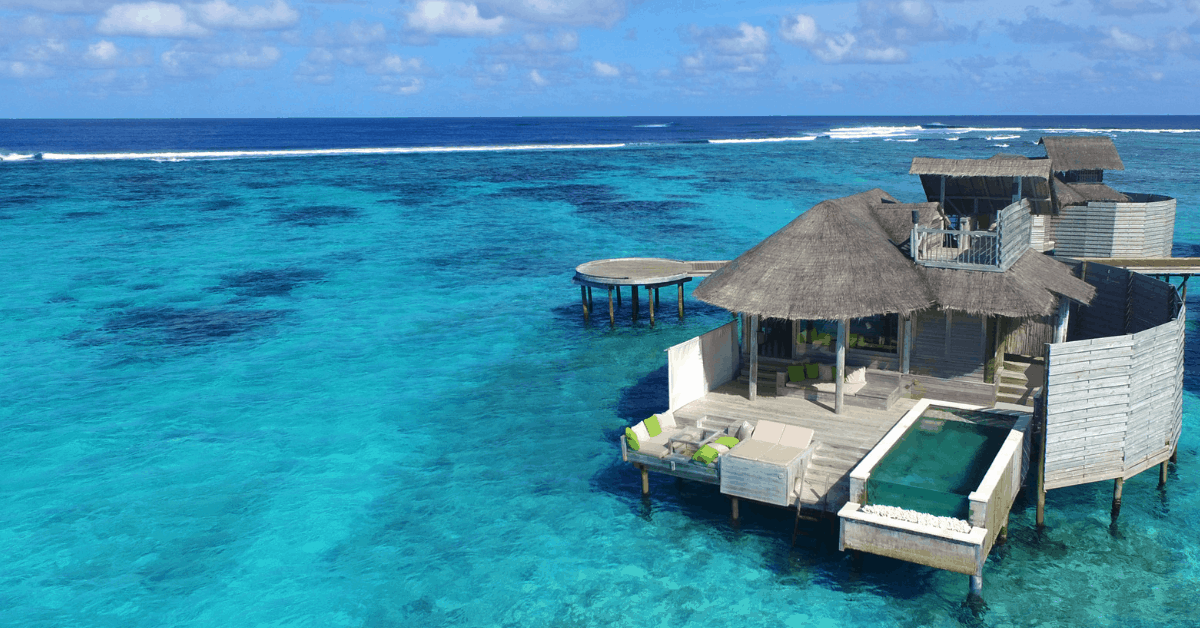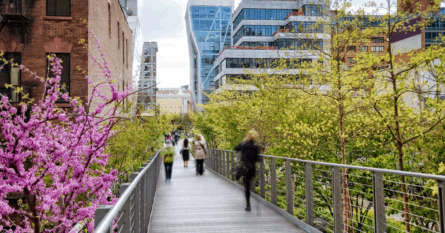From carbon-offsetting to eco-friendly hotels, here’s how to break down the jargon and make conscious travel decisions.

In 2018, a study published in the journal Nature Climate Change delved deep into the carbon footprint of global travel. After surveying more than 160 countries and quantifying the impact of everything from souvenir shopping to long-haul flights, the authors determined tourism accounted for around eight percent of the world’s greenhouse gases.
This percentage is set to increase, with the global tourism industry growing at a rate of around four percent a year, according to the study. Needless to say, it’s important for tourists to travel sustainably. Here are some ways to do so.
Understand the jargon
You start planning a trip with the best of intentions, but as you scroll through descriptions of hotels and restaurants, tours and cruises, it’s easy to get lost in a web of jargon. Here are a few words that often feature on travel websites and brochures, and what they mean:
Sustainable tourism
Tourism that makes a minimal impact on the environment and local culture, while helping conserve local ecosystems, and providing employment opportunities for the community.
Ecotourism
A form of environmentally-responsible travel to study, enjoy, and appreciate nature. Just like sustainable tourism, ecotourism aims to minimize environmental impact.
Carbon footprint
The amount of carbon released into the air due to certain activities of an individual, company or country.
Carbon-offsetting
An action or activity that compensates for emissions produced elsewhere. You calculate the emissions you produce using a carbon calculator, which are offset by investing in carbon reduction projects, such as wind farms.
Eco-friendly
This refers to something designed to have minimal effect on the environment.
It’s also worth knowing that many countries award certifications to environmentally-friendly initiatives. For example, EU eco-labels are awarded to products that meet a stringent set of criteria. Considering the awarding body is made up a range of organizations,
Meanwhile, The Carbon Trust is one of the world’s leading independent certification bodies for carbon offset businesses. They developed the world’s first certification for carbon emissions – The Carbon Trust Standard – as well as product carbon footprints.
Booking sustainable transport
Air travel is the largest contributor to emissions within the tourism sector. According to Carbon Brief, in 2018, domestic and international flights emitted around 895 million tonnes of carbon dioxide (which equates to 2.4 percent of global energy-related CO2 emissions). Luckily, the UN recently launched their CORSIA scheme, where 192 countries agreed to try and make long haul flights carbon offset by 2020. There are concerns about the scheme – namely a clause that suggests aviation companies might be able to use “low carbon” fossil fuels instead of offsetting – but the initiative is a huge step in the right direction.
Once you’ve arrived at your destination, use an environmentally friendly company for airport transfers or chauffeur services. Blacklane has electric vehicles in its Business Class, available in select cities. The company also offsets every
Whilst on holiday, try and explore the places you visit under your own steam. Walking and cycling are great ways to sightsee the neighborhoods. Kayak and sailing boat excursions are far better for the environment than motorboat tours. Companies such as Inntravel run self-guided walking and cycling holidays worldwide, where you’ll spend the night in local accommodation.
Ways to check if your hotel is eco-friendly
Your first step should be to check the hotel’s certification. LEED (Leadership in Energy and Environmental Design) is the world’s most widely used green building rating system. To get certified, buildings are judged across several categories, including water efficiency and building materials. They are then given a ranking that ranges from “Certified” to “Platinum”. Hotels with LEED credentials generate less waste and save energy and water. But it’s also worth bearing in mind that some eco-friendly hotels won’t have certification.
This means you’ll have to do your own research. If you can’t find the information online, you could the hotel directly whether they use any renewable energy sources, whether they have water conservation measures in place, and whether they recycle.
Hotel Kong Arthur, in Copenhagen, was the world’s first hotel to become completely carbon offset. They did so by offsetting their electricity, heat, and linen-consumption emissions. But they’ve also made numerous small adjustments, such as purchasing electric cars for guests to rent and buying organic and locally sourced products for their restaurants. They even have their own free range pigs.

Another indicator of sustainability is how the hotel engages with the local community. Most of the time, a hotel will be proud of their community engagement and mention it on their website, but if you can’t find any information online, why not ask the hotel directly whether they employ local staff, serve locally-sourced food, and whether they engage in conservation projects within the community.
You can also check to see if the hotel you want to visit features on Kynder, a travel platform which assesses hospitality establishments and only features those “that care about you, their staff, the community, and the planet”.
Six Senses Laamu, a hotel on a small atoll in the Maldives, received the Community Award at the 2018 Green Hotelier Awards. It employs 67 percent of its staff from Laamu Atoll, and has started a programme, ‘Eku-Eky’ (“together” in the local Dhivehi language), which promotes sustainable development locally. The hotel also has its own sustainable development programmes, including employing a team of marine biologists to run a coral protection scheme.

Other ways you can help
There are lots of other ways that you can travel more sustainably. Book activities with sustainable tourism operators, who make sure the local economy benefits from your visit. Intrepid Travel has invested more than 3.5 million USD into grassroots education, community, and animal welfare projects. They were also the first tour operator to end elephant riding on Intrepid trips, and to raise awareness about the brutality of lion walks.
It’s important to pay attention to the resources you consume and the waste you leave behind you. Many travelers drink water from disposable plastic bottles, contributing to 2.7 million tonnes of water bottle plastic waste produced annually. Travelers Against Plastic is an organization that educates travelers on how to clean their own water and reduce plastic waste.
With just a little bit of research, it’s easy to travel sustainability. You don’t need to compromise on quality to do so. In fact, it’s likely you’ll have an even more enriching experience.




